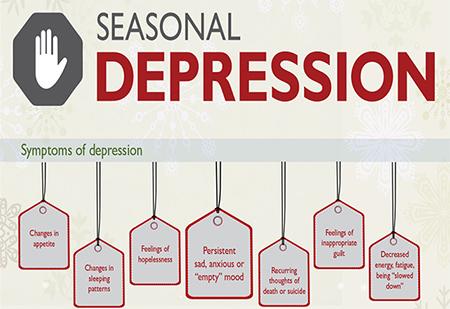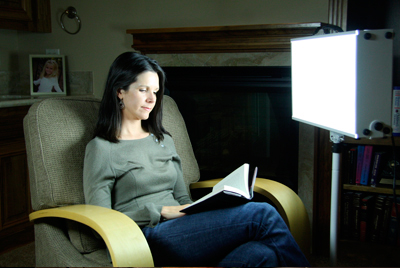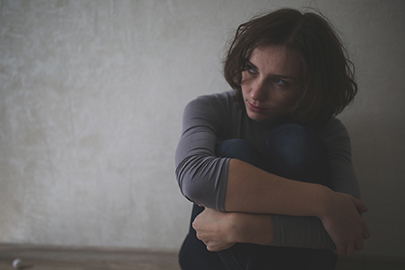Seasonal affective disorder (SAD) is a form of depression that flares up during the transition of seasons. People of all ages can be affected by this illness, so the Stevenson University’s Wellness Center provides treatment and support for students facing this condition.
 The most common season change that causes people to battle SAD happens as fall shifts into winter. Daylight savings time pushes the clocks back an hour, causing less daylight, and the approaching winter season brings colder temperatures as well.
The most common season change that causes people to battle SAD happens as fall shifts into winter. Daylight savings time pushes the clocks back an hour, causing less daylight, and the approaching winter season brings colder temperatures as well.
The Mayo Clinic reports that people suffering from fall and winter season SAD have symptoms such as oversleeping, appetite changes (usually including more carbohydrates), weight gain, and tiredness.
A popular treatment for SAD is light therapy. The National Institute of Mental Health notes, “Light therapy is to replace the diminished sunshine of the fall and winter months using daily exposure to bright, artificial light.”

There are a lot of different light therapy lamps or boxes available, so it is important to talk to a health care provider or someone at the Wellness Center to determine which would be most beneficial. An article from the Mayo Clinic called “Seasonal affective disorder treatment: Choosing a light therapy box” provides other helpful information that is useful to know before buying a light therapy lamp.
Other seasonal affective disorder treatments include medication, counseling, and more. The Wellness Center provides counselors who are available for all students who can help students cope with their seasonal depression and will discuss ways to manage it for the next season change.
Tahna Purnel, a Wellness Center counselor, said she recommends her patients change their outfit styles or surrounding colors to brighter hues as the fall and winter seasons begin. She said it is also helpful to remove any triggers that can be recognized from previous years. Participating in positive actions such as mingling with peers, eating healthy, and listening to upbeat music are beneficial to people suffering from SAD.

SAD is something that people face chronically and cannot be cured. It is vital that people with seasonal affective disorder speak to a counselor for a diagnosis. Once the disorder is known, patients and counselor can create a coping plan to help manage this disorder as they progress through their time at Stevenson.
The more stress placed on students, the more they may be affected by SAD. Therefore, it is important for students to practice good time management skills and use the resources on campus, including the Wellness Center’s help with test anxiety.
Purnel stressed how important it is that Stevenson students know that the Wellness Center can help people recognize and cope with their seasonal affective disorder.

























































